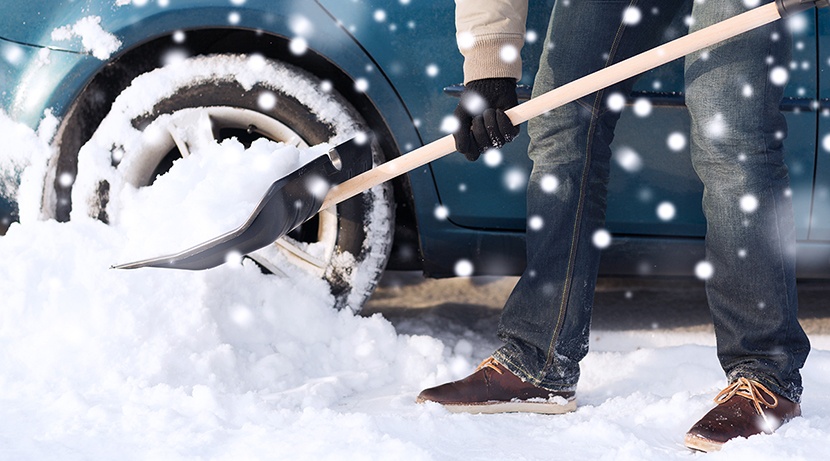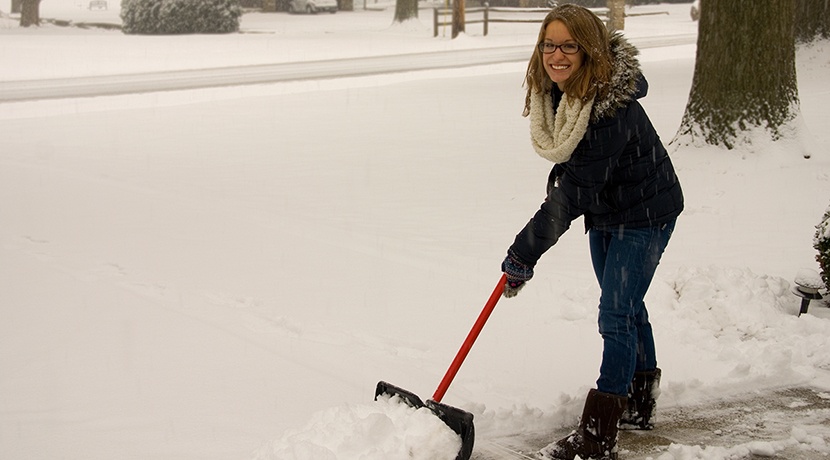 Snow may be a welcome sight to skiers, snowboards and other winter sports enthusiasts, but most homeowners don’t look forward to the white stuff with the same eagerness. With the snow comes ice and with ice comes slipping – which is why it is important to keep your walkways clear.
Snow may be a welcome sight to skiers, snowboards and other winter sports enthusiasts, but most homeowners don’t look forward to the white stuff with the same eagerness. With the snow comes ice and with ice comes slipping – which is why it is important to keep your walkways clear.
While it may be a challenge just to maintain your driveways and pathways, it is important to keep in mind that the way you clear snow and ice can have a direct impact on your curb appeal and the longevity of your concrete driveways and sidewalks.
Winter is a challenging time for concrete. Frost can penetrate the concrete causing heaving or changes in the direction of surface drainage. In addition, de-icing chemicals can harm it causing the fine top layer to peel away and lead to spalling and pitting. In some cases contamination of the aggregates by expansive material such as coal, ironstone or organize matter can lead to pitting and areas where the expansive stone has popped out. The most common causes of flaking, spalling and pitting are impacts, weathering, and freeze/thaw cycles.
 One way to protect your driveway and sidewalks is to avoid de-icing chemicals and salt. Never use these products on concrete as it can damage the surface. Here are some suggestions on how to de-ice without the use of salt:
One way to protect your driveway and sidewalks is to avoid de-icing chemicals and salt. Never use these products on concrete as it can damage the surface. Here are some suggestions on how to de-ice without the use of salt:
- Minimize snow and ice by shoveling. The sooner after snow stops falling, the better as the freezing and thawing process can cause the driveway to crack.
- Use sand and sun. If you spread sand over the driveway, the sun’s process of heating the sand will create “pock marks” in the ice and help you break up the ice so you can clear it more easily.
- Keep downspouts down to prevent water (which can become ice) from accumulating on your driveway or sidewalk.
- If shoveling is too challenging, consider hiring a professional snow removal company or pay the neighborhood kid a few dollars to help.
De-icing without the use of salt is also good for the environment. Salt can harm plants including your lawn, contaminate water and, in severe cases, sicken or kill wildlife.
Once you make it through winter, another way to protect your concrete is to apply a breathable surface sealer every year. Sealing your driveway helps to keep road salt from penetrating your driveway. Road salt accumulates on your vehicle when driving on roads and causes damage to your driveway when it falls off your vehicle.
The two most common sealers are silane and silxoxane, compounds which are derived from the silicone family. These sealers penetrate the concrete as deep as 3mm but allow the concrete to breath, preventing a build-up of vapour pressure between the concrete and sealer that can occur with some film-forming materials. Because the sealer is embedded within the concrete, it is more durable to abrasive forces and ultraviolet deterioration. It can provide longer lasting protection than film-forming sealers.
With regular maintenance and careful winter attention, your driveway and sidewalks can remain a safe, attractive part of your home.





